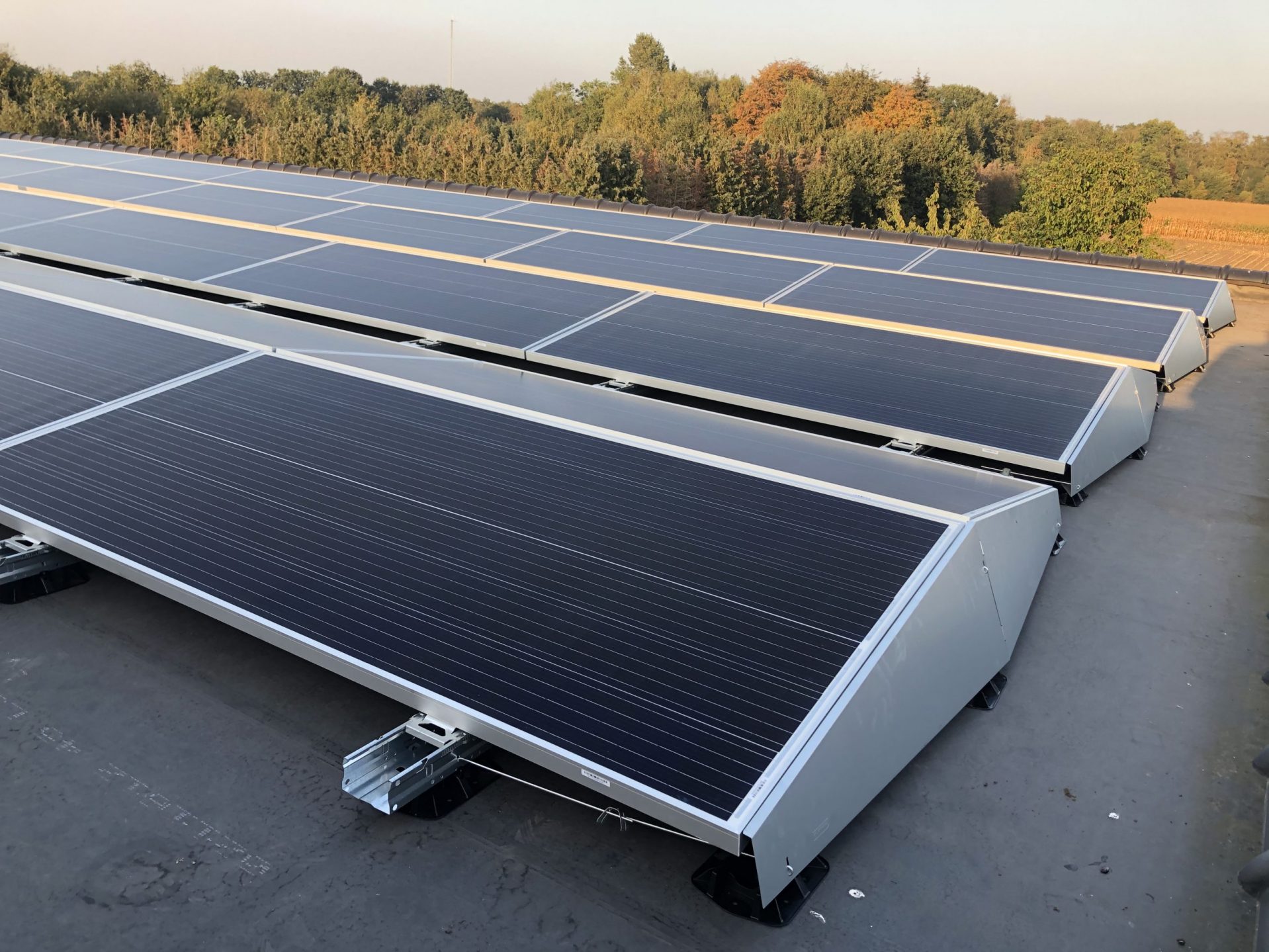
This article, is a translation of a Dutch version, written by Joyce Beuken, published on 19 April 2021 on www.solar365.nl
After a long and intensive research process, Esdec presented FlatFix Wave, a toolless and easy-to-install mounting system for panels. Various stakeholders have been closely involved in the development of this system in order to be able to independently demonstrate that the system works. How did this concept come about?
Research manager Jeroen Weller explains how FlatFix Wave was the result from intensive collaboration. “All the knowledge that we’ve acquired over the years is included in this system.” FlatFix Wave was launched in October last year. What sets this mounting system apart from the rest?
“Esdec now has two flat roof systems. One of these is FlatFix Fusion and is on the market for a few years now. This system has been developed to enable flexible construction, on roofs with obstacles or a different shape.”
The system was launched at the end of 2020. Weller: “We analyzed all the pain points of flat roof systems in the world that were known until then and incorporated the solutions into this new system.” Perhaps the biggest unique advantage is that the system is “tool-less”, says Weller. “An installer does not have to take anything to the roof in terms of tools. Because the parts are pre-assembled, nothing needs to be screwed together anymore.” This saves a lot of time and hassle, but also ensures that the installation can be done error-free. “Because you’re no longer standing on the roof with a cordless drill, installation has also become a lot quieter. That’s a nice bonus. We noticed this when we were testing the system in practice and we could hear the birds singing.”
The system can be installed so quickly that it looks like as if it installs itself like a wave over the roof; hence the name “Wave”. With FlatFix Wave, the panels are not clamped on the short sides of the panel, but at approximately a quarter and three quarters distance on the long side. Again, a well-considered choice according to Weller. “Clamping in the correct positions on the long sides has the advantage that the systems can handle higher wind and snow loads. This is also a lot more favorable for the ever-increasing panels. This mainly prevents the formation of possible microcracks (hairline cracks in the solar cells). This new way of clamping is therefore recommended by many panel manufacturers.” More small adjustments were made compared to traditional systems which turned out to make a positive difference based on calculations. “For example, the side plate that closes off the open side of the field has been deliberately made a bit slanted. This is a lot more aerodynamic and therefore less ballast is required.
The focus in the development of FlatFix Wave was twofold, according to Weller. “On the one hand you want to maximize ballast in your new system for higher reliability. On the other hand you want to minimize because of convenience, costs and time. These are conflicting interests on which the following two development points have a strong influence. In the development we were able to turn two knobs. We have optimized the aerodynamics, but we have also made the mechanical coupling as high as possible. This coupling increased by applying very strong cross-links in two directions in the fields. With this, the panels are very strongly connected.
“In the development of the Wave system, in addition to our own knowledge and experience, we also included all external knowledge that could be found in the project. Various parties were consulted or involved, such as EPC companies, installers, certification bodies, technical research institutions and Peutz, our partner for wind tunnel tests. With the aim of developing a future-proof and solid system.”
The requirements and preconditions for Wave were drawn up with all these parties in a large number of sessions and were incorporated into the final product. During several rounds, all concepts and interim versions were tested again and adjusted accordingly.
“In addition, Peutz, our partner for wind tunnel tests, was asked: If you could design the perfect flat roof system from an aerodynamic point of view, which requirements would it have to meet? The sloping side plates, was one of the characteristics that resulted in the final design.”
Weller talks about the different concepts that were discussed and led to the final system. Obviously, not all characteristics from the concepts made it to the end product. “An earlier version included a spoiler for extra under pressure and had a completely closed front and side. The spoiler worked well in itself, but turned out not to fit into the design in a practical way.” Half a year after the launch of the system, the team is very busy: they are working hard on various configurations of the system, such as a south-facing configuration, as the current system is currently only available in a dual configuration.
This article is the first of three about mounting systems, wind tunnel testing and verification of test results. The second part will be published on April 30.